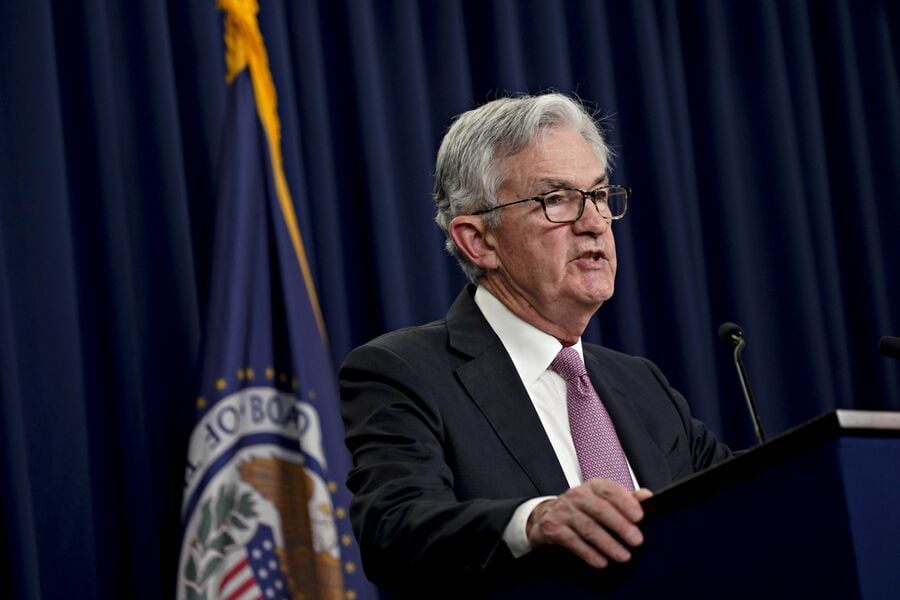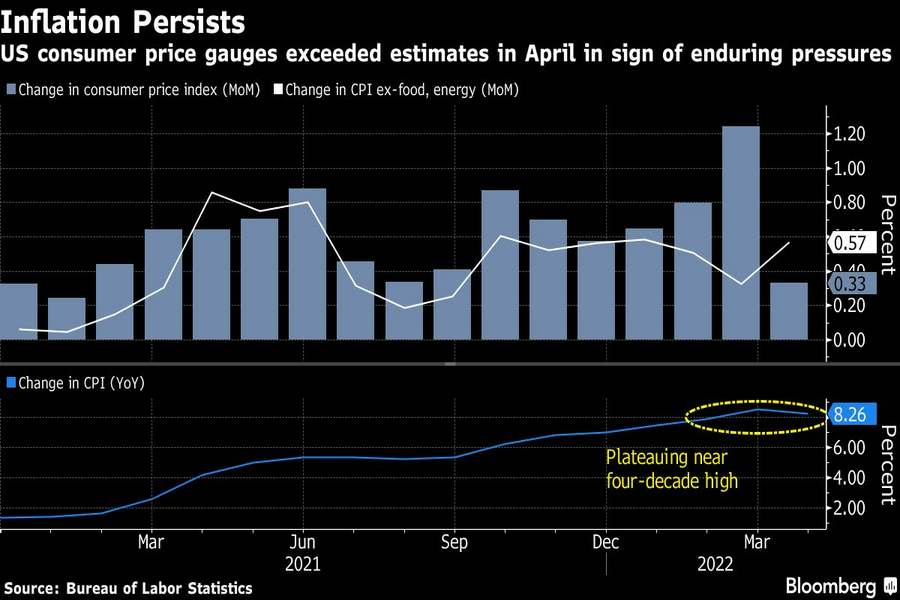

Federal Reserve Chair Jerome Powell, in his most hawkish remarks to date, said the U.S. central bank will keep raising interest rates until there is “clear and convincing” evidence that inflation is in retreat.
“What we need to see is inflation coming down in a clear and convincing way, and we’re going to keep pushing until we see that,” Powell said Tuesday during a Wall Street Journal live event. “If that involves moving past broadly understood levels of ‘neutral,’ we won’t hesitate at all to do that.”
The Fed chair repeatedly stressed the need to curb the hottest inflation in decades during the roughly 35-minute interview, calling price stability “the bedrock of the economy” and acknowledging that some pain in achieving this — including a slight rise in the unemployment rate — was a cost worth paying in order to achieve it.
Powell and his colleagues on the central bank’s Federal Open Market Committee voted to raise their benchmark rate by a half-percentage point at a policy meeting earlier this month, and the chair at the time suggested to reporters that hikes of similar magnitudes would be on the table at their next two meetings in June and July. He repeated that guidance Tuesday, while adding that near-term inflation developments would be a critical determinant of the size of coming moves.
If the Fed doesn’t see clear and convincing evidence of abating inflationary pressures, “then we’ll have to consider moving more aggressively,” Powell said. “If we do see that, then we can consider moving to a slower pace.” The target range for the benchmark federal funds rate currently stand at 0.75% to 1%. The FOMC next meets June 14-15.
U.S. stocks regained session highs as investors weighed the comments from Powell, while Treasury yields climbed, led by more policy-sensitive shorter-dated tenors.
“I think it was more hawkish,” said Derek Tang, an economist at LH Meyer, a policy analysis firm in Washington. “He is suggesting that this phase of ‘50s’ will last for longer. There was a suggestion that it could be more than two 50 basis-point hikes.”
U.S. consumer prices rose 8.3% in the 12 months through April, according to Labor Department figures published May 11. That was slightly lower than the 8.5% increase in the 12 months through March, which marked the highest inflation rate in 40 years.
While inflation is set to recede further, supply-chain disruptions associated with the Russian invasion of Ukraine and Covid lockdowns in China will probably keep upward pressure on prices in the coming months. Powell made it clear that the Fed would not be over-analyzing the incoming data as it formulates near-term policy.
“We all read — of course, everyone reads — the inflation reports very carefully, and looks for details that look positive, and that kind of thing,” he said. “But truthfully, we don’t — this is not a time for tremendously-nuanced readings of inflation.”

Domestic demand remains strong even as financial conditions have tightened following comments in recent weeks from a number of Fed officials who have said they want to raise rates to “neutral” levels by the end of the year, which they judge to be around 2.5%. But Powell cautioned higher rates could eventually start to have a bigger impact on growth.
“This is a strong economy and we think it’s well positioned to withstand less accommodative monetary policy, tighter monetary policy,” Powell said. “There could be some pain involved to restoring price stability, but we think we can maintain a strong labor market.”
The unemployment rate in April stood at 3.6%, just above the pre-pandemic low of 3.5% achieved in the last expansion. Total employment was still more than 1 million jobs below February 2020 levels, and monthly job creation remains elevated relative to the pre-pandemic expansion as Americans continue returning to work.
Powell, confirmed by the Senate last week to a second four-year term at the helm of the central bank, said getting inflation under control may require a somewhat higher unemployment rate.
“You’d still have quite a strong labor market if unemployment were to move up a few ticks,” he said. “It might not be a perfect labor market, but it will be a strong labor market.”
The S&P 500 index of U.S. stocks is down about 15% from the record high achieved in early January, while yields on government 10-year notes stand at 2.99%, up from 1.5% at the start of the year.
The rise in longer-term yields is pushing up borrowing costs for housing, one of the most interest-rate sensitive sectors of the economy that the Fed would like to see cool to help curb price pressures. The rate on a 30-year fixed-rate mortgage was above 5.4% last week, up slightly more than two percentage points from the start of the year, according to the national average tracked by Bankrate.com.
Powell said that the reaction in financial markets showed that investors were getting the Fed’s message.
“Of course, volatility has been up a little bit, and that has some effect on liquidity in some markets, but nonetheless, the markets are orderly, they’re functioning,” Powell said.
“I think they’re processing the way we’re thinking — the way the FOMC is thinking — about policy pretty well,” he said. “And I think that the idea, again, is to have financial conditions tighten to the point where growth will moderate.”

Relationships are key to our business but advisors are often slow to engage in specific activities designed to foster them.

Whichever path you go down, act now while you're still in control.

Pro-bitcoin professionals, however, say the cryptocurrency has ushered in change.

“LPL has evolved significantly over the last decade and still wants to scale up,” says one industry executive.

Survey findings from the Nationwide Retirement Institute offers pearls of planning wisdom from 60- to 65-year-olds, as well as insights into concerns.
Streamline your outreach with Aidentified's AI-driven solutions
This season’s market volatility: Positioning for rate relief, income growth and the AI rebound
